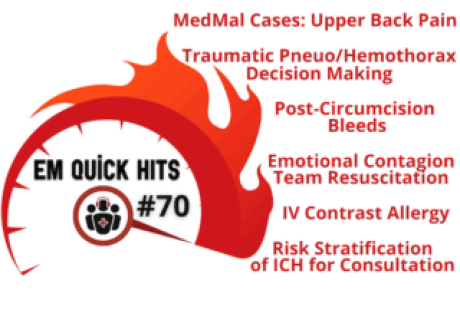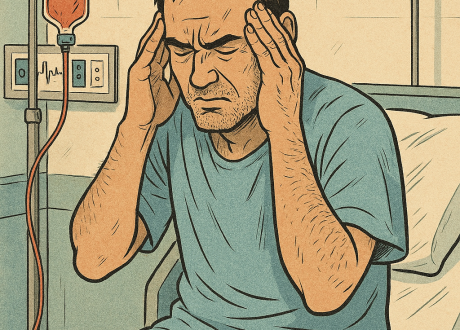Contributor: Travis Barlock MD
Educational Pearls:
When might you need to apply a painful stimulus in a medical setting?
-
The main reason is to assess the patient's level of consciousness, such as when they are waking up from anesthesia or have potentially suffered a brain injury.
-
It can be part of the Glasgow Coma Scale (GCS) if patients are not responding to auditory stimuli.
-
Possible levels of consciousness include Alert, Lethargic, Obtunded, and Comatose (ALOC)
What are the approved ways to apply a painful stimulus to assess central nervous system function?
-
Trapezius squeeze. Grab the trapezius muscle and twist (contraindicated in clavicle fractures).
-
Supraorbital rim pressure. Find the notch in the supraorbital rim of the patient and push hard with your thumb (contraindicated in facial fractures).
-
Mandibular pressure (not mentioned). Press hard at the angle of the jaw on the mandibular nerve (contraindicated in mandible fractures).
-
Sternal rub. Push down with your knuckles into the patient’s sternum and rub vigorously (contraindicated in chest injury/surgery).
-
Each technique should be done for between 15 and 30 seconds.
-
If skin damage is observed in one location, move to a different location. This is especially true of the sternal rub.
Important note: Peripheral techniques such as nail tip pressure should only be used to evaluate spinal nerve reflexes and not as a method of assessing the level of consciousness.
References
-
Lower J. Using pain to assess neurologic response. Nursing. 2003 Jun;33(6):56-7. doi: 10.1097/00152193-200306000-00047. PMID: 12799591.
-
Middleton PM. Practical use of the Glasgow Coma Scale; a comprehensive narrative review of GCS methodology. Australas Emerg Nurs J. 2012 Aug;15(3):170-83. doi: 10.1016/j.aenj.2012.06.002. Epub 2012 Aug 3. PMID: 22947690.
-
Mistovich JJ, Krost W, Limmer DD. Beyond the basics: patient assessment. Emerg Med Serv. 2006 Jul;35(7):72-7; quiz 78-9. PMID: 16878751.
-
Naalla R, Chitirala P, Chittaluru P, Atreyapurapu V. Sternal rub causing presternal abrasion in a patient with capsuloganglionic haemorrhage. BMJ Case Rep. 2014 Apr 7;2014:bcr2014204028. doi: 10.1136/bcr-2014-204028. PMID: 24711478; PMCID: PMC3987201.
Summarized by Jeffrey Olson, MS2 | Edited by Jorge Chalit, OMSII










